Cycling cognoscenti love a debate, and lately, the hooked vs. hookless rim discussion has been getting a lot of airtime. Not so long ago, the debate was between tubeless tires vs. tubulars, but it didn’t take long for tubeless to emerge as the victor in that battle, so we’ve collectively moved on to what may seem like yet another exercise in splitting ever-finer hairs. Corollary to this discussion is the complication introduced via the use of tire inserts, yet another factor in the air, rubber, carbon, foam and sealant mix keeping riders upright and headed in the right direction.
Having trouble making sense of it all? Let’s take a step back.
A brief history
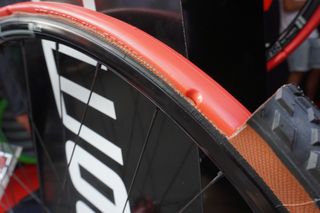
(Image credit: Future)
Initially introduced for mountain bike wheels to allow riders to run lower pressures while still protecting rims against impact, tire inserts have since been adapted for gravel and road cycling, with slightly different applications depending on the discipline.
On a mountain bike, tire inserts help to support tire sidewalls and prevent tire ‘burping’ under hard cornering. The ability to run lower pressures on rough terrain is significant, as it increases traction significantly. Gravel inserts work similarly, with rim protection a more critical component of the equation than on the road.
For road cycling, the ability to keep riding after a flat is the key benefit of running tire inserts. One of the primary reasons that tubular tires persisted for so long in professional racing (and still do on occasion) is the fact they can be ridden safely even after puncturing. Riders race at high speeds in close quarters, so this is critical—flats are a reality during races, and riders must be able to safely navigate them without spreading chaos every time. Now that tubeless is the go-to option for racers, tire inserts allow for this run flat safety gap.
What are tire inserts?
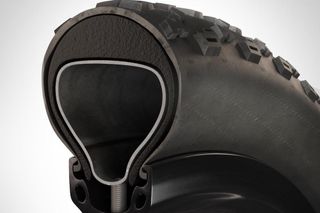
There are a few different variations, but most tire inserts are made of a continuous loop of closed cell foam that sits inside the tire against the rim bed. The insert is installed in a tubeless tire much in the same way as a tube, though not nearly as easily. Closed cell foam does not interact with sealant or prevent it from stopping punctures. It also doesn’t change the shape or ride characteristics of the tire. It does provide support against the tire beads and sidewalls which help to keep the tire in place in the event of a flat.
Should you use them?
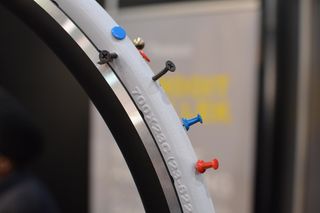
(Image credit: Tannus)
It depends. If you’re riding tubeless tires and doing most of your riding in groups or racing, then tire inserts will be just as helpful to you as they are to the pros. And staying upright when you flat is a good thing for everyone. There are downsides, however: inserts add weight and can be aggravating to wrestle into a tubeless tire. They can be even more aggravating to remove. Also, they’re not cheap. For people who mostly ride solo (and thus have the liberty to stop quickly without causing other riders to crash) or don’t tend to flat very often, inserts probably aren’t necessary.
The latest race content, interviews, features, reviews and expert buying guides, direct to your inbox!
In the case of mountain biking, where roots and rocks are prevalent, there are more defined advantages. For road riding, the main benefit is the ability to maintain control and continue riding when you get a flat tire—using lower pressures and protecting the rim from obstacles are much less critical.
What about safety?
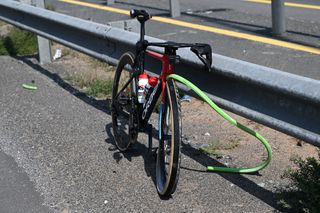
(Image credit: Getty Images)
The primary discussion on this subject surrounds the use of hookless rims. As the term implies, hookless rims do not have hooks on the edges of the inner rim bed to lock the tires into place. This has historically been a critical component of the entire system. The hookless design, like many of the other new tech that has made its way into road cycling, originated with mountain bikes, where lower pressures and higher volume tires posed fewer issues for this interface.
In nearly all cases, rims and tires are manufactured by separate companies. Getting every rim and tire manufacturer on the same page about the critical dimensions in which these two pieces interact has been a challenge. There has been some amount of passing the buck between different manufacturers: the tire makers say: talk to the rim people and the rim people say ask the tire makers.
Tire inserts have been discussed as one way to improve the safety of hookless rims, through helping to support the tire sidewalls in the event of a flat tire. If, however, the rims and tires aren’t compatible, then whether or not you use an insert doesn’t make much difference.
What does ETRTO have to say about inserts?
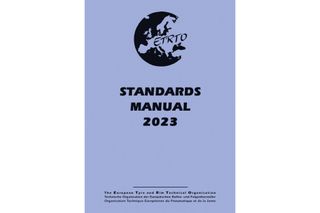
(Image credit: ETRTO)
This compatibility situation has been improved via the introduction of ETRTO standards to establish industry-wide parameters for the dimensions of rims and tires so that they can safely and reliably work together. ETRTO stands for the European Tyre and Rim Technical Organization. This entity, headquartered in Belgium, has operated for over 50 years to standardize rim and tire dimensions across a variety of industries.
We reached out to ETRTO to ask more about the organization’s role in the process and heard back from engineer Josep Guinjoan, who explained how it establishes these critical parameters.
According to Guinjoan, “the activities of E.T.R.T.O. are strictly confined to technical aspects of tyres, rims and valves as far as fitting and use are concerned. The ETRTO cycle and rim subcommittees bring together all bicycle tyre and rim manufacturers to establish the update of the state of the art of bicycle tyres, bicycle rims standards and the combination of those tyres and rims (recommended rim contours and widths). Different participating ETRTO members are invited to provide their collected data. ETRTO put[s] all the data together in [an] anonymous way [for] the S/C [to] discuss the results [and] draw conclusions.”
In other words, ETRTO doesn’t perform tests itself, but it provides an avenue for the industry to better work together and utilize the accumulated knowledge of its numerous partners.
When asked if there has been any discussion of the use of inserts in bicycle tubeless tires, Guinjoan said; “Unfortunately and due to confidential reasons, we cannot provide this information yet. But we can ensure that the Cycle [Subcommittee] is one of the most active [Subcommittees] in order to work and ensure ETRTO objectives in the Cycle world.”
So far, ETRTO has introduced no regulations regarding inserts. Based on this response, it seems safe to infer that inserts have not been part of the cycling subcommittee’s scope thus far. That may change in the future, however.
Conclusion
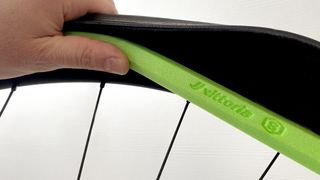
(Image credit: Vittoria)
Tubeless tires and rims are now an established technology, but they are also still being refined. The introduction and adoption of ETRTO standards has improved riders’ experience in terms of safety, reliability and ease of installation, but there remain questions about the safety of hookless rims for road applications.
Nothing about tire inserts themselves is inherently dangerous, though it must be said that there has been very little publicly available research on the topic. Tubeless inserts have been raced at the highest levels of competitive cycling for several years now with much success, but inserts do not have the capacity to make risky tire and rim pairings safe.
Tire inserts are just one of the many variables within this complicated equation. Inserts can provide additional robustness to the overall system, but they’re not a panacea. Whether or not they’re right for you will depend on where you ride, who you ride with, and your confidence levels around dealing with punctures, on and off the bike.

